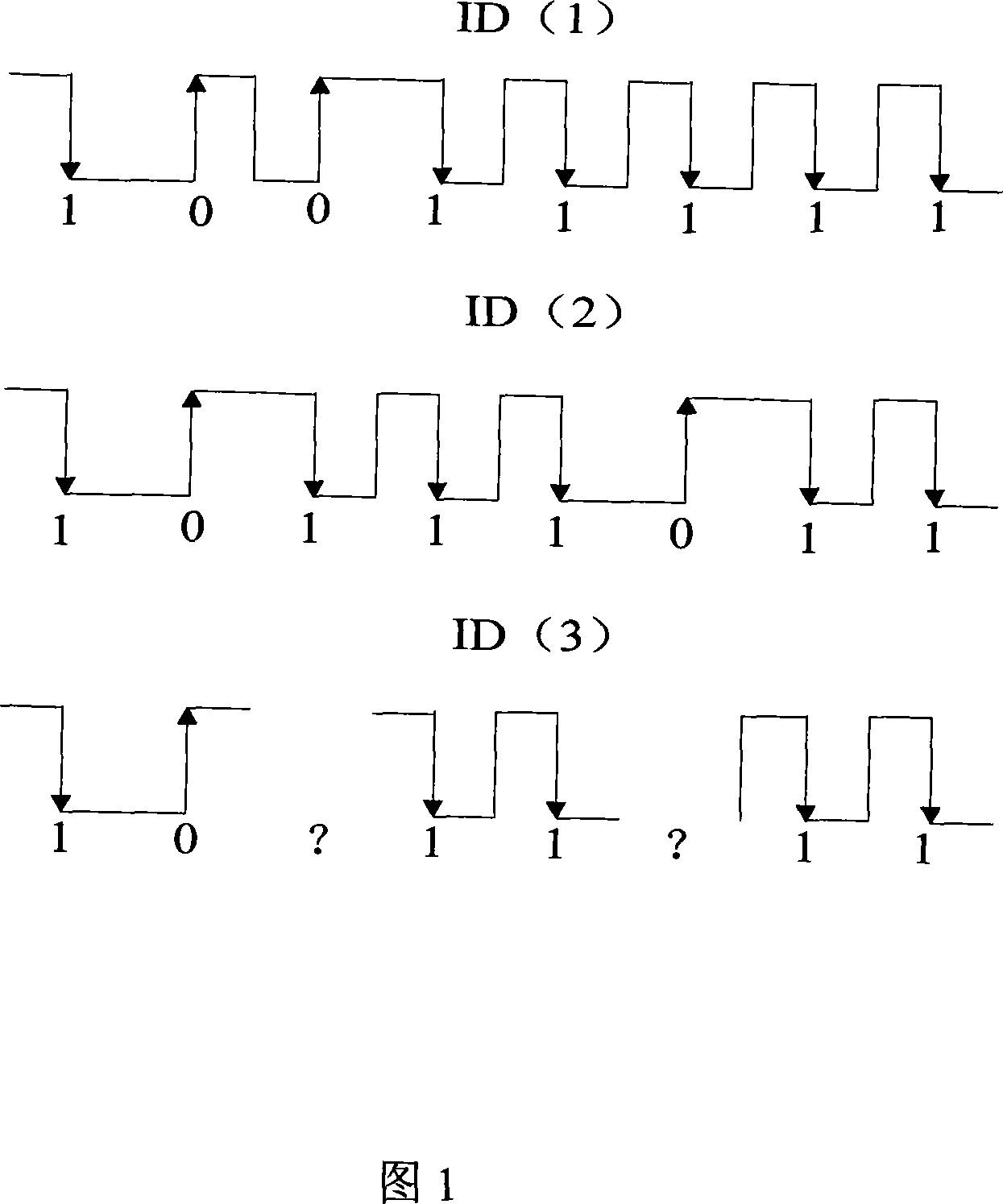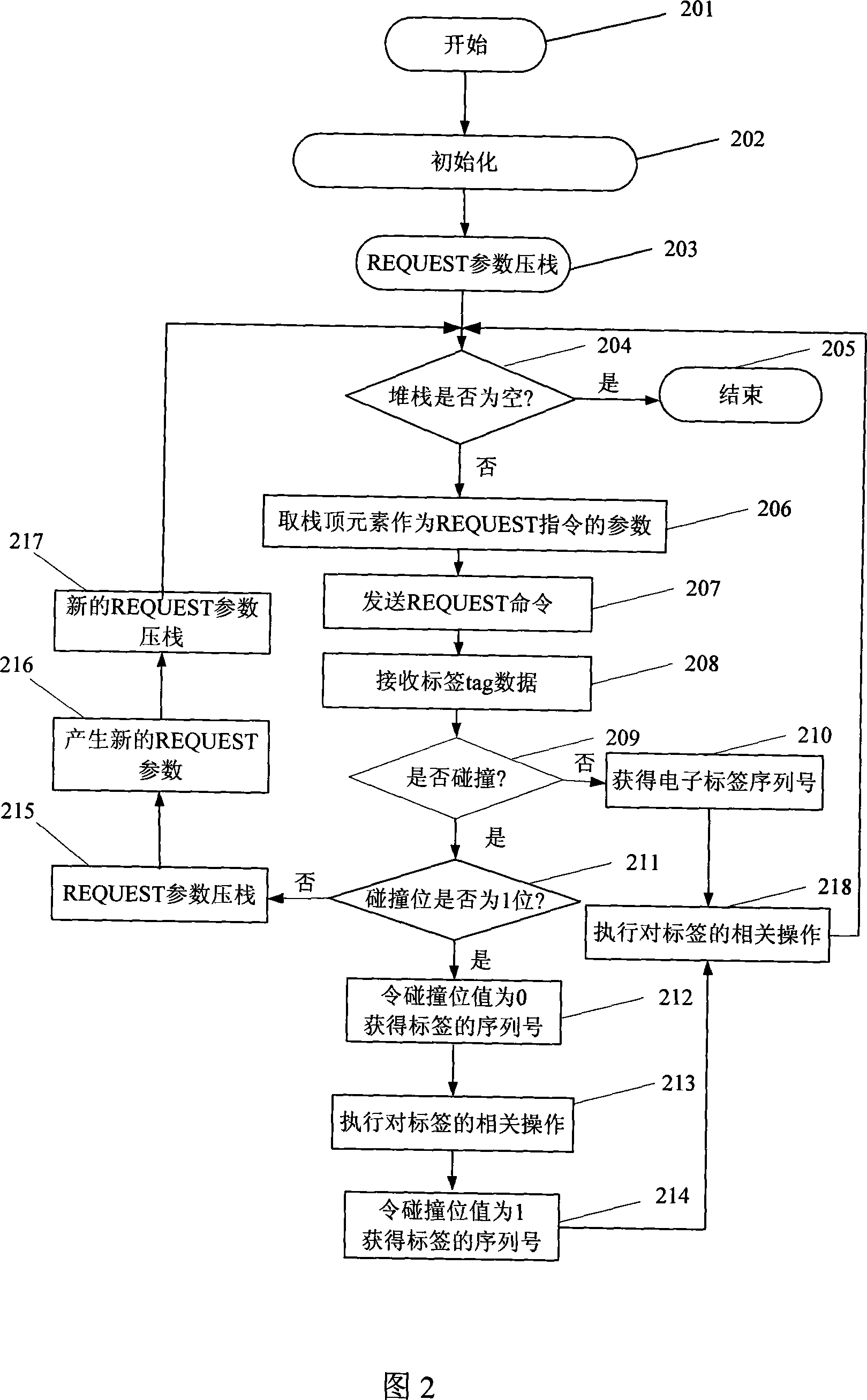Multi-label collision-proof method
An anti-collision and multi-label technology, applied in the field of automatic identification, can solve problems such as shortening the time required for anti-collision, achieve the effects of shortening query time, narrowing the scope, and overcoming the complexity of the process
- Summary
- Abstract
- Description
- Claims
- Application Information
AI Technical Summary
Problems solved by technology
Method used
Image
Examples
Embodiment Construction
[0043] The present invention will be further described in detail in conjunction with the accompanying drawings and embodiments.
[0044] Fig. 2 is a flow chart of the multi-tag anti-collision method according to the present invention. Referring to Figure 2, initially a storage area of the reader is set as a stack, and the algorithm steps are as follows:
[0045] Step 201, the program starts;
[0046] Step 202, initialize, generate a serial number of all 1s as a parameter of REQUEST, and store it in the stack;
[0047] Step 203, push the REQUEST parameter onto the stack;
[0048] Step 204, judging whether the stack is empty, if not empty then execute step 206, otherwise execute step 205 and the program ends;
[0049] Step 205, the program ends;
[0050] Step 206, taking the top element of the stack as a parameter of the REQUEST command;
[0051] Step 207, sending a REQUEST command;
[0052] Step 208, receiving tag data;
[0053] Step 209, determine whether a collision ...
PUM
 Login to View More
Login to View More Abstract
Description
Claims
Application Information
 Login to View More
Login to View More - R&D
- Intellectual Property
- Life Sciences
- Materials
- Tech Scout
- Unparalleled Data Quality
- Higher Quality Content
- 60% Fewer Hallucinations
Browse by: Latest US Patents, China's latest patents, Technical Efficacy Thesaurus, Application Domain, Technology Topic, Popular Technical Reports.
© 2025 PatSnap. All rights reserved.Legal|Privacy policy|Modern Slavery Act Transparency Statement|Sitemap|About US| Contact US: help@patsnap.com


